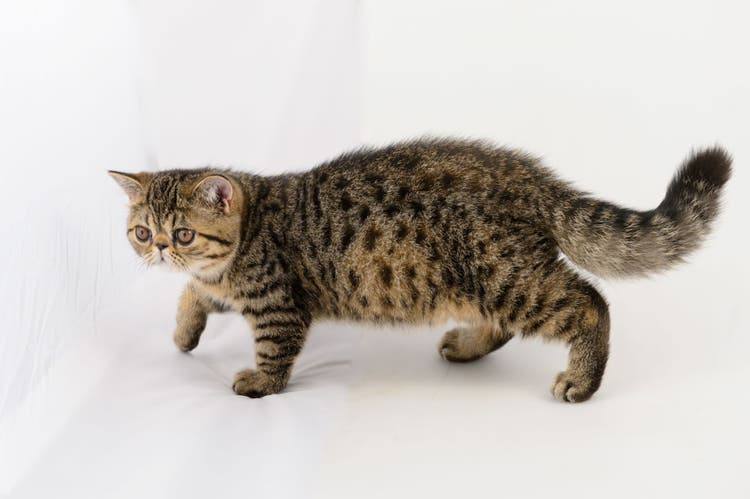
All About Exotic Cat Breeds
While you may love the majestic beauty of the lion, the tiger and the cheetah, you would never have them as pets. These wild cats are too dangerous to be kept as pets. But that desire to own a wild animal is what drove cat breeders to develop exotic cat breeds. These exotic cat breeds fulfill the desire for an exotic cat without the inherent danger.
When it comes to exotic cat breeds, the word “exotic” means that the cat is a wild species, or part wild (hybrids). These exotic cat breeds are wild, not domestic. Most of these species are extremely difficult if not impossible to litter train or house break. And spraying throughout the house by both males and females is a given.
Oftentimes an owner cannot handle the activity level, size and often destructive behavior of these exotic cat breeds. So be careful and think it through before jumping into ownership of an exotic cat breed.
Here are some of the most common exotic cat breeds.
Savannah
This is a relatively new breed that was recognized by The International Cat Association (TICA) in 2012. To create a Savannah cat, you must cross a domestic house cat with an African Serval. A Savannah is the largest of all domestic cats. It has an unusual appearance with an exotic spotted and striped coat. The Savannah can leap great distances. They are intelligent and curious creatures. It is illegal to own a Savannah in some states.
Bengal
Developed by crossing small Asian leopard cats with domestic cats, the Bengal looks like a leopard but it has the disposition of a domestic cat. This is a large cat with distinctive markings. Their stunning coats come in many patterns including spots, marbled and rosettes.
Abyssinian
With its unique ticked coat, the Abyssinian looks like an African wildcat. This cat is playful, intelligent and energetic.
Toyger
The Toyger is the result of trying to breed a house cat that looks like a tiger. This registered breed traces its lineage to domestic shorthairs and Bengals selected for their markings.
Ocicat
Resembling an ocelot in appearance, the Ocicat actually has no ocelot or any wild cat in its family tree. The breeder bred together cats with Abyssinian, Siamese and American shorthair lineages. Ocicats come in a variety of colors. They are best known for their spots, which can be tawny, chocolate, cinnamon, blue, lavender or fawn in color. This is a very social cat – there’s nothing wild about it.
Bombay
The Bombay looks like a miniature black panther, but don’t let that fool you. He has a calm and easy-going personality. This exotic breed was developed by crossing sable Burmese with black American Shorthairs.
Chausie
The Chausie was developed from hybrids of the Asian Jungle Cat. The average Chausie weighs in at around 18 pounds, but they can grow up to three feet long and weigh as much as 35 pounds.
Egyptian Mau
This exotic cat has a beautiful spotted coat and exotic mascara markings around the eyes. The breed, which originated in Egypt, probably descended from an African wildcat. The Egyptian Mau can run up to 30 mph.
Cheetoh
This is a fairly new breed of house cat. Crossing a Bengal and an Ocicat, it was developed in an attempt to breed a cat that looks like more of a wild cat but is still a gentle house pet. The Cheetoh is a very large cat. Healthy males can reach a weight of 23 pounds. This cat is tame and as safe around children as any other house cat.
Serengeti
The Serengeti cat is the result of breeding that was meant to resemble a wild Serval, but it does not contain any Serval bloodline. The first Serengeti cat was a cross between a Bengal and an Oriental shorthair. Since then, the progeny have been bred with many other types of cats to improve the breed – but never a Serval. The Serengeti cat has long ears and long legs. The exotic breed is active, agile and vocal.
Somali
This long-haired variety of the Abyssinian also has the appearance of an African wildcat. It has a bushy tail like a fox. This cat is very active, not a lap cat. The Somali has a clever and curious nature.
To learn more about exotic cats, go to Everything Cat Lovers Need to Know About Exotic Cats.